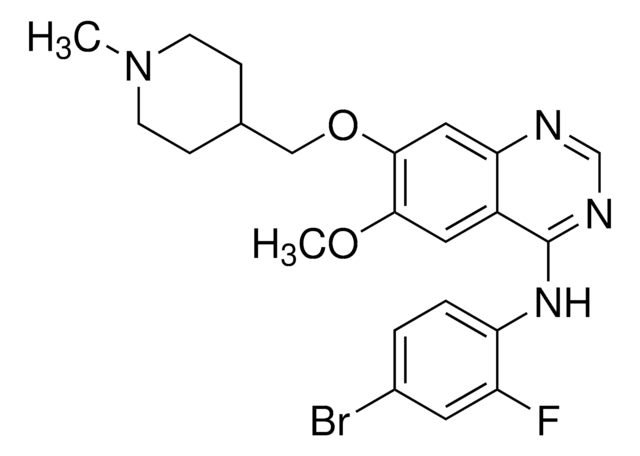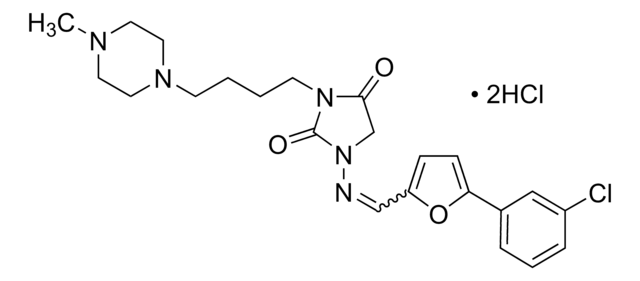I9910
Ibutilide hemifumarate salt
≥98% (HPLC)
Sinónimos:
(±)-N-[4-[4-(Ethylheptylamino)-1-hydroxybutyl]phenyl]-methanesulfonamide hemifumarate salt, Corvert
Seleccione un Tamaño
Seleccione un Tamaño
About This Item
Productos recomendados
Ensayo
≥98% (HPLC)
Formulario
solid
color
off-white to tan
solubilidad
H2O: >20 mg/mL
temp. de almacenamiento
room temp
cadena SMILES
OC(=O)\C=C\C(O)=O.CCCCCCCN(CC)CCCC(O)c1ccc(NS(C)(=O)=O)cc1.CCCCCCCN(CC)CCCC(O)c2ccc(NS(C)(=O)=O)cc2
InChI
1S/2C20H36N2O3S.C4H4O4/c2*1-4-6-7-8-9-16-22(5-2)17-10-11-20(23)18-12-14-19(15-13-18)21-26(3,24)25;5-3(6)1-2-4(7)8/h2*12-15,20-21,23H,4-11,16-17H2,1-3H3;1-2H,(H,5,6)(H,7,8)/b;;2-1+
Clave InChI
PCIOHQNIRPWFMV-WXXKFALUSA-N
Información sobre el gen
human ... KCNH2(3757)
¿Está buscando productos similares? Visita Guía de comparación de productos
Acciones bioquímicas o fisiológicas
Características y beneficios
Palabra de señalización
Warning
Frases de peligro
Consejos de prudencia
Clasificaciones de peligro
Acute Tox. 4 Oral - Repr. 2
Código de clase de almacenamiento
11 - Combustible Solids
Clase de riesgo para el agua (WGK)
WGK 1
Punto de inflamabilidad (°F)
Not applicable
Punto de inflamabilidad (°C)
Not applicable
Elija entre una de las versiones más recientes:
Certificados de análisis (COA)
¿No ve la versión correcta?
Si necesita una versión concreta, puede buscar un certificado específico por el número de lote.
¿Ya tiene este producto?
Encuentre la documentación para los productos que ha comprado recientemente en la Biblioteca de documentos.
Active Filters
Nuestro equipo de científicos tiene experiencia en todas las áreas de investigación: Ciencias de la vida, Ciencia de los materiales, Síntesis química, Cromatografía, Analítica y muchas otras.
Póngase en contacto con el Servicio técnico![Ibutilide fumarate United States Pharmacopeia (USP) Reference Standard, monograph mol wt. 885.23 ([(C20H36N2O3S)2 . C4H4O4])](/deepweb/assets/sigmaaldrich/product/structures/404/117/7040a472-b868-4c5c-9c32-9082773df332/640/7040a472-b868-4c5c-9c32-9082773df332.png)










